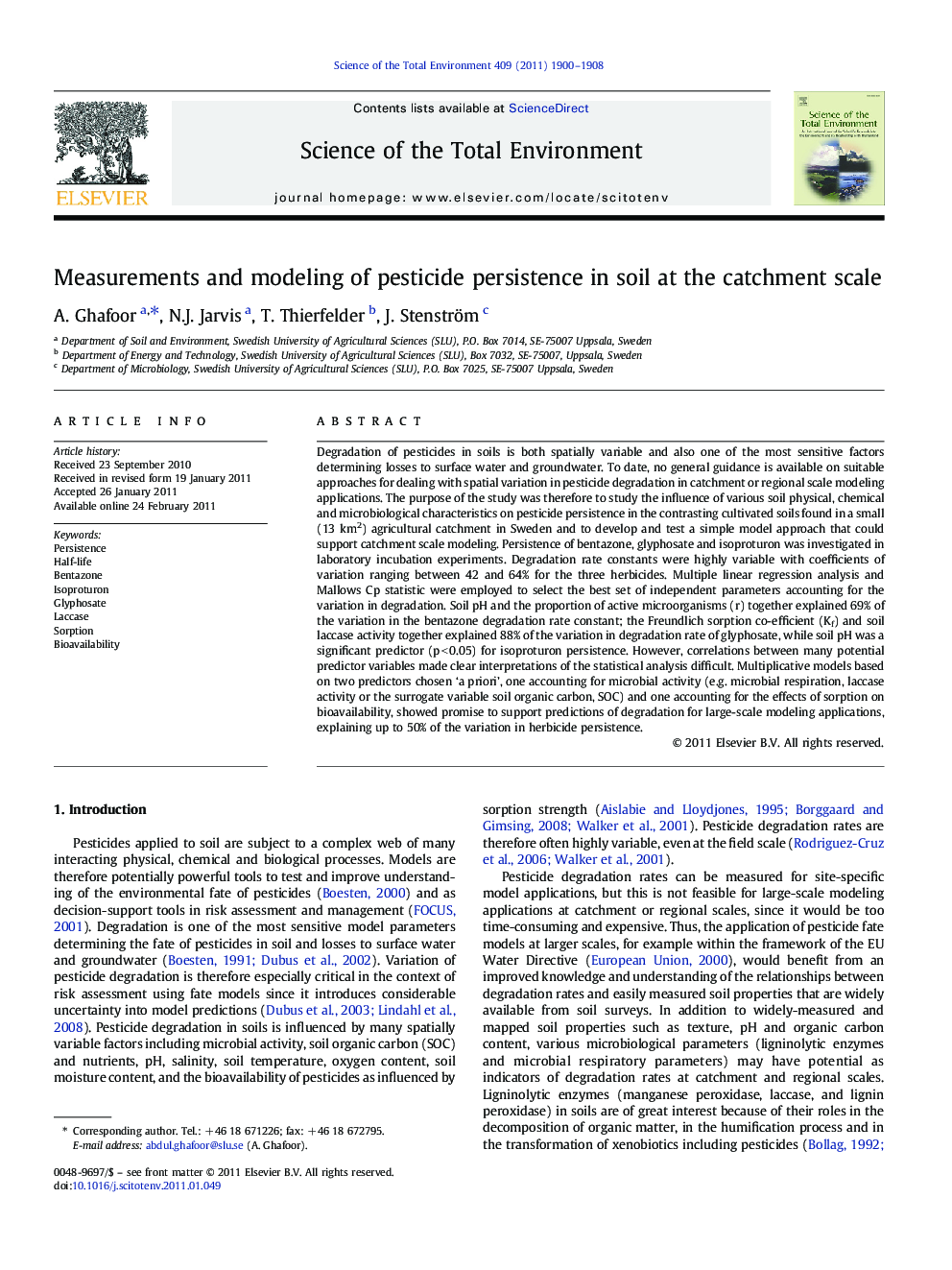| Article ID | Journal | Published Year | Pages | File Type |
|---|---|---|---|---|
| 4430227 | Science of The Total Environment | 2011 | 9 Pages |
Degradation of pesticides in soils is both spatially variable and also one of the most sensitive factors determining losses to surface water and groundwater. To date, no general guidance is available on suitable approaches for dealing with spatial variation in pesticide degradation in catchment or regional scale modeling applications. The purpose of the study was therefore to study the influence of various soil physical, chemical and microbiological characteristics on pesticide persistence in the contrasting cultivated soils found in a small (13 km2) agricultural catchment in Sweden and to develop and test a simple model approach that could support catchment scale modeling. Persistence of bentazone, glyphosate and isoproturon was investigated in laboratory incubation experiments. Degradation rate constants were highly variable with coefficients of variation ranging between 42 and 64% for the three herbicides. Multiple linear regression analysis and Mallows Cp statistic were employed to select the best set of independent parameters accounting for the variation in degradation. Soil pH and the proportion of active microorganisms (r) together explained 69% of the variation in the bentazone degradation rate constant; the Freundlich sorption co-efficient (Kf) and soil laccase activity together explained 88% of the variation in degradation rate of glyphosate, while soil pH was a significant predictor (p < 0.05) for isoproturon persistence. However, correlations between many potential predictor variables made clear interpretations of the statistical analysis difficult. Multiplicative models based on two predictors chosen ‘a priori’, one accounting for microbial activity (e.g. microbial respiration, laccase activity or the surrogate variable soil organic carbon, SOC) and one accounting for the effects of sorption on bioavailability, showed promise to support predictions of degradation for large-scale modeling applications, explaining up to 50% of the variation in herbicide persistence.
Research Highlights► Degradation rates for three herbicides were highly variable in the studied soils. ► Significant correlations between degradation rates and soil properties were found. ► A model accounting for bioavailability and microbial activity was tested. ► The model shows promise for dealing with spatial variation in pesticide degradation.
